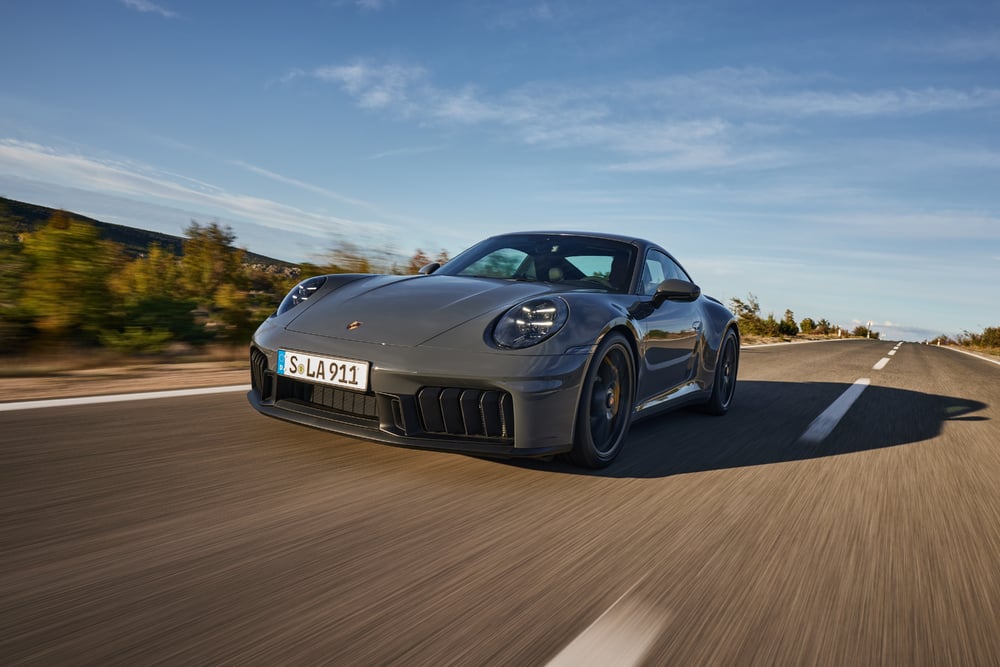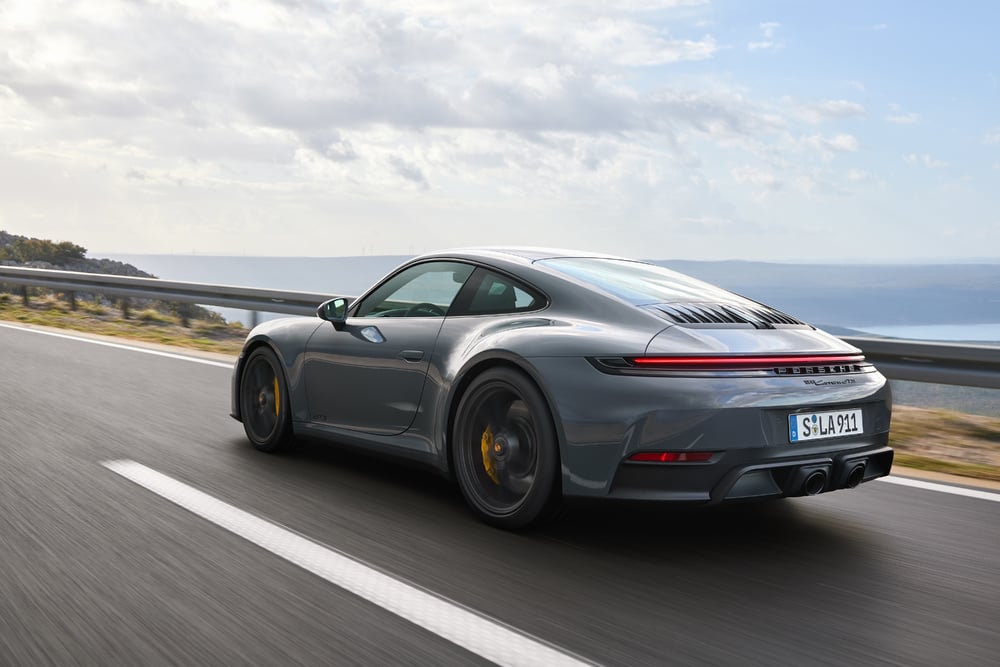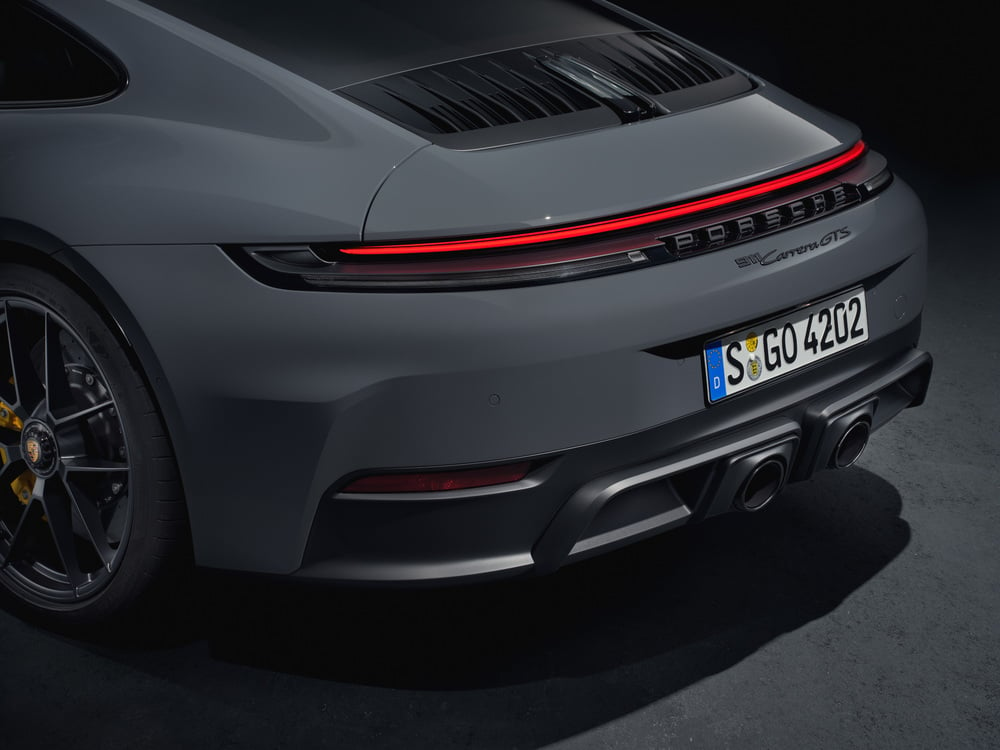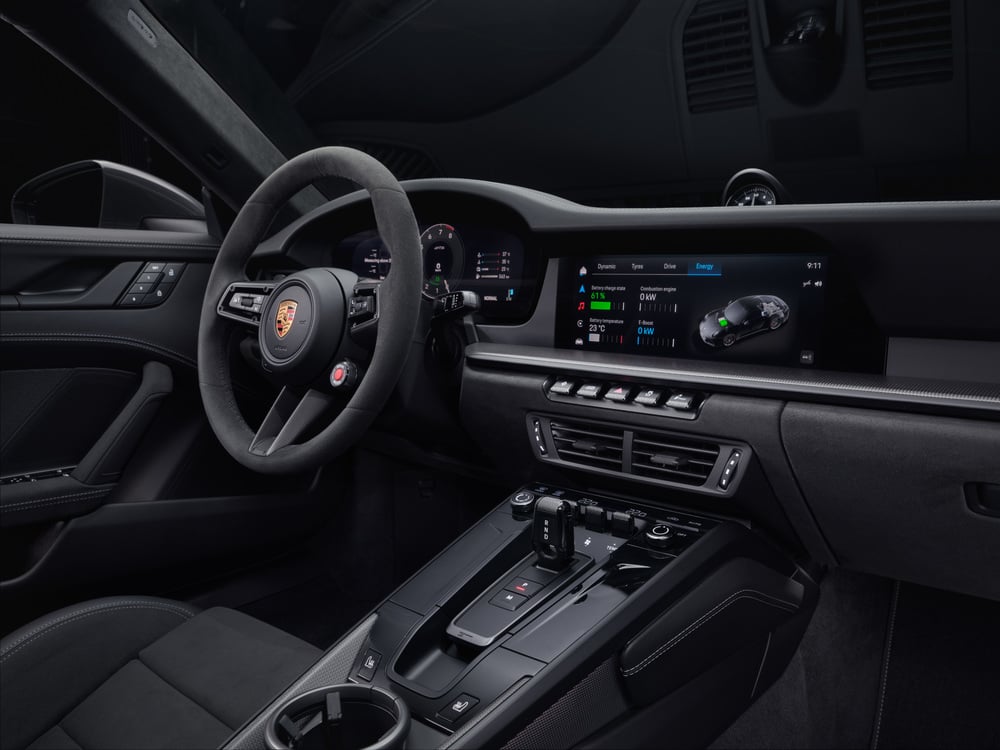In September 1963 visitors to the Frankfurt Motor Show caught their first glimpse of the Porsche 911, a car destined to develop both cult and iconic status over the next 60 years as it constantly re-invented itself without losing any of the ‘Porscheness’ that made it unique.
Now, for 2024,the latest 911 Carrera GTS is the first street-legal 911 to feature a super-lightweight performance hybrid. Its newly developed powertrain system, with 3,6-litres of displacement, significantly enhances driving performance.

Do you feel a Porsche coming on - check out what we have on offer.
The 911 Carrera continues to feature a 3,0-litre twin-turbo boxer engine, now comprehensively revamped. It includes the intercooler from the Turbo models, now located directly under the rear lid grille. The turbo-chargers, previously reserved for the GTS models, have been modified to reduce emissions and increase power to 290 kW with a maximum torque of 450 Nm. The new 911 Carrera Coupé accelerates from 0 to 100 km/h in 4,1 seconds (3,9 seconds with the Sport Chrono package) and has a top speed of 294 km/h, representing improvements of 0,1 seconds and 1 km/h respectively over its predecessor.
With this relaunch, Porsche has modernised four of its six model lines within a few months: Panamera, Taycan, Macan, and 911.
“Our product range is younger and more attractive than ever,” says CEO Oliver Blume. “It offers our customers more customisation options and exclusive experiences.”
The 911 Carrera GTS models feature a hybrid system inspired by motor sport.
“We explored and tested various concepts to create a hybrid system perfectly suited for the 911. The result is a unique drive that complements the overall design of the 911 and significantly boosts its performance,” says Frank Moser, vice president of Model Lines 911 and 718.

Check out our finance calculator for the best guidance towards your new car
The lightweight and powerful T-Hybrid system includes a newly developed electric exhaust gas turbo-charger. An integrated electric motor, positioned between the compressor and turbine wheel, rapidly accelerates the turbo-charger, immediately building boost pressure. The electric motor in the turbo-charger also functions as a generator, producing up to 11 kW (15 PS) of electric power from the exhaust gas flow. The wastegate-free electric turbo-charger allows for a single turbo-charger instead of two.
The powertrain also features a permanent magnet synchronous motor integrated into the new, more powerful eight-speed dual-clutch transmission (PDK). Even at idle, it provides extra drive torque of up to 150 Nm and a power boost of up to 40 kW.

Looking for exotic cars - click here
Porsche couples both electric motors to a lightweight, compact high-voltage battery. This battery, similar in size and weight to a conventional 12-volt starter battery, stores up to 1,9 kWh of energy and operates at 400 V.
Additionally, Porsche has installed a lightweight lithium-ion battery for the 12 V on-board electrical system to optimise overall weight.
The heart of the T-Hybrid drive is a newly developed 3,6-litre boxer engine. The high-voltage system drives the air-conditioning compressor electrically, allowing for the omission of the belt drive, thus making the engine more compact. This creates space above the power unit for the pulse inverter and DC-DC converter.
The engine’s displacement has been increased by 0,6 litres compared to its predecessor, with an enlarged bore of 97 mm and an increased stroke of 81 mm. The engine features VarioCam camshaft control and valve control with rocker arms, maintaining the ideal mixture ratio of fuel and air across the entire map.
Without electrical assistance, the boxer engine produces 357 kW and 570 Nm of torque. The total system output is 398 kW and 610 Nm, representing a power increase of 45 kW over its predecessor. The new 911 Carrera GTS also surpasses its predecessor in acceleration to 100 km/h, especially from a standstill.
The suspension of the 911 Carrera GTS has been extensively revised, with rear-axle steering now standard. This enhances high-speed stability and reduces the turning circle. Porsche Dynamic Chassis Control (PDCC) anti-roll stabilisation is integrated into the high-voltage system, utilising an electro-hydraulic control system for increased flexibility and precision. The sports suspension with a variable damper system (PASM) and a ride height lowered by 10 mm provides characteristic GTS handling.
Porsche has streamlined the 911’s exterior with targeted updates, enhancing aerodynamics and performance.

Related Content: Porsche and South Africa - A decades-long love story
New, model-specific bumpers, integrated light functions in the standard matrix LED headlights, and larger cooling vents at the front are among the changes. The 911 Carrera GTS models feature five visible cooling air flaps at the front and adaptive front diffusers, optimising airflow as needed.
Inside, the new 911 features a two-seater layout as standard, with a 2+2 seat configuration available as an option. The cockpit combines the traditional 911 design with modern technology, focusing on the driver’s needs with intuitive controls.
A fully digital 12,6-inch curved instrument cluster offers customisable views, including a Classic display inspired by traditional Porsche dials. The Porsche Communication Management (PCM) system, operated via a 10.9-inch central display, has been improved for easier customisation of driving modes and driver assistance systems.
Colin Windell
Proudly CHANGECARS











